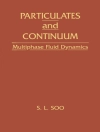This book promotes understanding of the raw material selection, refractory design, tailor-made refractory developments, refractory properties, and methods of application. It provides a complete analysis of modern iron and steel refractories. It describes the daily demands on modern refractories and describes how these needs can be addressed or improved upon to help achieve the cleanest and largest yields of iron and steel. The text contains end-of-chapter summaries to help reinforce difficult concepts. It also includes problems at the end of chapters to confirm the reader’s understanding of topics such as hoop stress modeling in steel ladle and vessels, establishment of thermal gradient modeling , refractory corrosion dynamics, calculation of Blast furnace trough dimension based on thermal modeling, to name a few. Led by editors with backgrounds in both academia and industry, this book can be used in college courses, as a reference for industry professionals, andas an introduction to the technology for those making the transition to industry.
- Stands as a comprehensive introduction to the science and technology of modern steel and iron-making refractories that examines the processes, construction, and potential improvement of refractory performance and sustainability;
- Serves as a versatile resource appropriate for all levels, from the student to industry novices to professionals;
- Reinforces difficult-to-grasp concepts with end-of-chapter summaries;
- Maximizes reader understanding of key topics, such as refractory selection for steel ladle and vessels, and their corrosion dynamics, with real life problems.
Daftar Isi
Steel Plant Refractories.- Iron and Steel Making Process.- Blast Furnace Refractory.- Hot stove and hot air carrying system.- Refractory practice in EAF.- Hot metal transport and de-sulphurisation.- BOF refractory.- Refractory for secondary refining.- Refractory in ladle flow control and purging system.- Refractory for casting.- Modern refractory practice to make clean steel.- Best practice in design and installation practice.
Tentang Penulis
Subir Biswas is currently Head of the Department at Refractory Technology Group in Tata Steel Limited, Jamshedpur, India. After completion of B.Tech from College of Ceramic Technology, Kolkata, under University of Calcutta in the year 1985, he was employed in M/S. Carborundum Universal Limited (CUMI), Chennai, India. In CUMI, he worked in Research and Development of Refractory division for ten years. In his tenure in CUMI, he earned in-depth experience in micro-structural analysis on nanoparticles, characterization and fabrication of ceramic foam filters for automobile application. He successfully completed the projects and developed non-oxide based Si3N4 bonded Si C refractory, Si C based ramming masses for Blast Furnace application, low cement castable and ultralow cement castable to maiden use in Indian industry as an import substation. He was involved in development of Cordierite refractory for energy efficient kiln furniture. He joined Tata Steel in 1996in Refractory Technology Group under Tata Steel R&D and Scientific Services. He has worked in Refractory Maintenance department, Blast Furnace & Iron making area and leading refractory maintenance team. He earned experience in refractory material selection and application in the area of Iron & Steel making. During working in Blast furnace, leaded refractory team in relining of Blast furnaces, and earned experience over 8 numbers of furnace relining. Other contributions are development of tap-hole clay for large blast furnaces through a joint project with TRL Krosaki and NIT Rourkela. He worked in steel making and mills refractory maintenance in different levels of responsibilities and in the year 2009, was promoted to Head of Refractory Technology Group, the position he is presently holding. He is involved in different collaborative projects with NIT -Rourkela, TRL -Krosaki and other reputed Global refractory suppliers. A few of his achievements include: Dolomite – C refractory in Steel ladle zone, energy efficient steel ladle and tundish back up lining and up-graded quality of tundish hot face lining for higher sequence. He has 8 international and 18 national publications to his credit.
Dr. Debasish Sarkar is currently a Professor at the Department of Ceramic Engineering, National Institute of Technology (NIT), Rourkela, Odisha, India. After obtaining his undergraduate in Ceramic Engineering from University of Calcutta in 1996, he was employed at Sarvesh Refractories Ltd., Rourkela. He pursued an M.Tech in Metallurgical and Materials Engineering from Indian Institute of Technology, Kanpur. He completed his Ph.D in Ceramic Engineering at NIT, Rourkela in February 2007 followed by post-doctoral research in Korea Research Institute of Standards and Science (KRISS), South Korea, where he earned extensive experience in synthesis, characterizations and fabrication protocols of nanostructured ceramics. As Principal Investigator, he has successfully managed several research projects whose total cost was more than 2.5 crore (USD 370, 000), including projects on Nanomaterials for functional and structural applications, and Refractories. The government of India and private companies like Tata Steel Ltd., Tata Krosaki Refractories Ltd, etc. sponsored most of the projects. He has cumulative 22 years of experience and has published 60 peer-reviewed international journal papers, 15 papers in conference proceedings, 2 book chapters in Pan Stanford Publisher, Singapore and Wiley – VCH Verlag Gmb H with a citation record (H-index: 20); 2 books are in the pipeline with CRC Press, USA. Dr. Sarkar published 6 papers in J. of American Ceramics Society, including one single author paper. He has been a lead inventor o one Korean patent, one European patent and one Indian Patent, and a co-inventor for two Korean patents. He has published and reviewed several journals in ACS, Blackwell Publishing Inc, Elsevier, RSC, and Springer, together with Grand Project Reviewer of European and Central Asia Countries. He is a life member of different societies and a member on Editorial Boards and Technical Committees around the globe.












